With a strong feature set, great build quality, impressive specifications, including 60ips, 144dB of WDR and H.265 compression, 45m IR, auto image stabilisation and loads more, Panasonic’s 1080p i-Pro Extreme bullet camera nicely balances features and cost.
THERE’S a lot to like about Panasonic’s WV-S1531L iPro Extreme Bullet. It has nice build quality, with a combination of metal and silver poly, is very easy to install and has pleasing performance vectors, including a high frame rate that doesn’t blow out the bitrate budget. It’s not the sharpest 1080p bullet camera on the market but contrives to deliver faces and plates when many other bullet cameras can’t thanks to liberal doses of amplification.
As tempting as it is to rave on about performance, let’s briefly look at some specifications. Panasonic has crammed plenty of features into this camera. There’s a touchable titanium dioxide Rain Wash coating, H.265 smart coding (Long GOP, Auto-VIQS, Smart Face Coding), H.264 compatibility and mixed mode streaming, recording and viewing, auto image stabilization, secure communication, up to 4-stream simultaneous H.265/264 encoding, enhanced Super Dynamic 144dB at 30fps (depending on model), ultra-high sensitivity from 0.008 lux to 0.015 in colour mode (depending on model), touchable Rain Wash Coating (outdoor models only) and built-in IR LED (up to 130 feet).
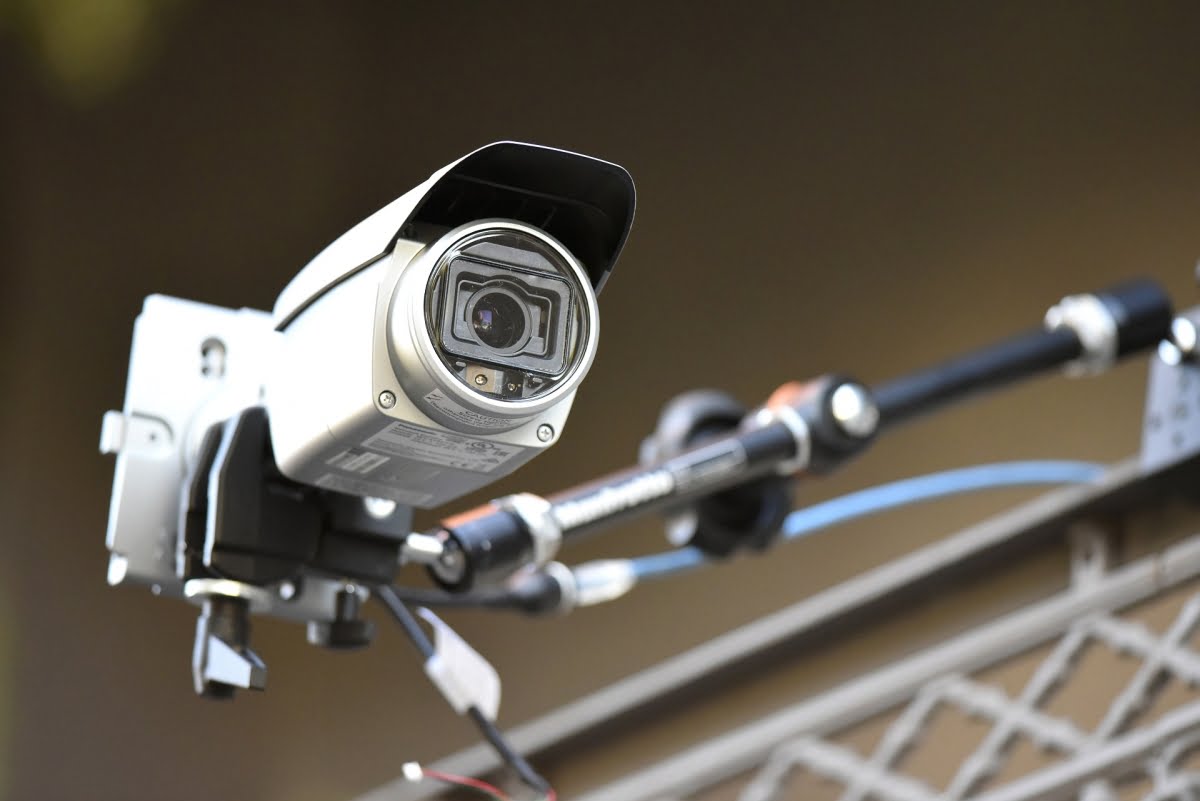
There’s Intelligent Auto (iA) which is claimed to increased discernibility in low visibility, day/night function with minimum scene illuminations of 0.012 lux in colour and 0.006 lux in monochrome, both at F1.6 and a fairly slow shutter speed the specification doesn’t mention. Smart face coding, or Intelligent Face Compression, provides high picture quality at ‘face best shot area’ while reducing other non-important areas to save network bandwidth and disk space.
You get Super Dynamic WDR and BLC, Enhanced Super Dynamic Day/Night, day/night (ICR), auto back focus/focus assist, 45m IR range. The motorised lens is 2.8-10mm (3.6x) with a maximum aperture of F1.6 giving an angle of view between 31-112 degrees. There’s integrated 2-way audio, SD memory card slot, external I/O, vandal resistance to IEC62262 and IK10 and water and dust resistance to IP66 and NEMA 4X. The beast is rugged – it will handle operating temps of -40 to 60C, which is good going. Power is by PoE or 12V DC and the camera weighs in at less than 1kg.
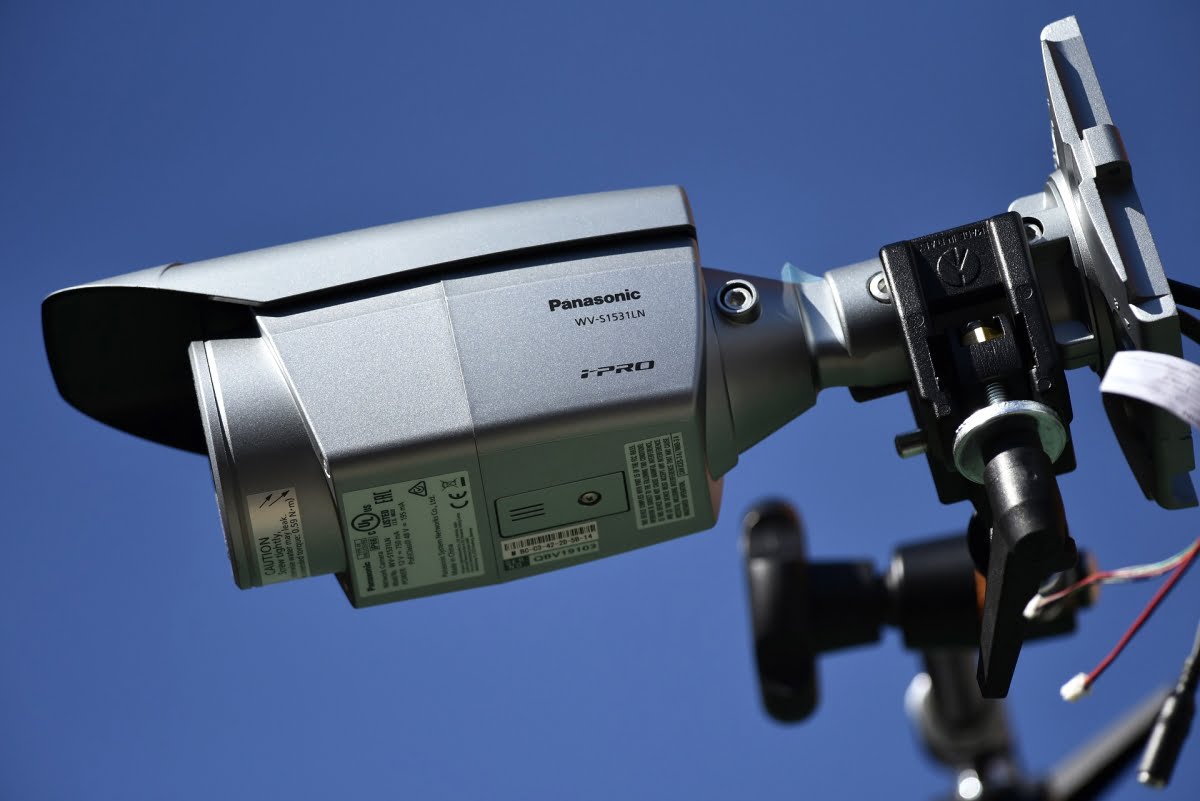
Importantly, all the i-PRO Extreme cameras provide a highly secure protection layer and robust authentication to guard against cyber threat with a PC-level IP data security suite via Panasonic Secure Communication technology, and Symantec Device Certificates. This suite includes attack detection, which is good to know.
Our hardware at SEN is the same old Dell Opteplex 9020 that needs a video card upgrade (it’s fine with 1080p) and our little Netgear Prosafe GS108P POE switch. There are no cameras on the network and we’re browsing into the camera via onboard software across our 1GB local network.
Driving the bus
I start out in the back lane looking Nor-West into about 80,000 lux. I notice some internal reflections in these conditions but nothing that impacts on the usefulness of the images. The 2.8-10mm motorised lens has a wide view and the camera has very useful distortion correction to support it. The images are a little soft and there’s some detail blending in surrounding walls probably due to face priority, which I have activated. Regardless, I have a lot of detail, including faces, deep into the scene. Using the motorised lens and autofocus is easy – it’s not as fast as the fastest cameras but still quite good.
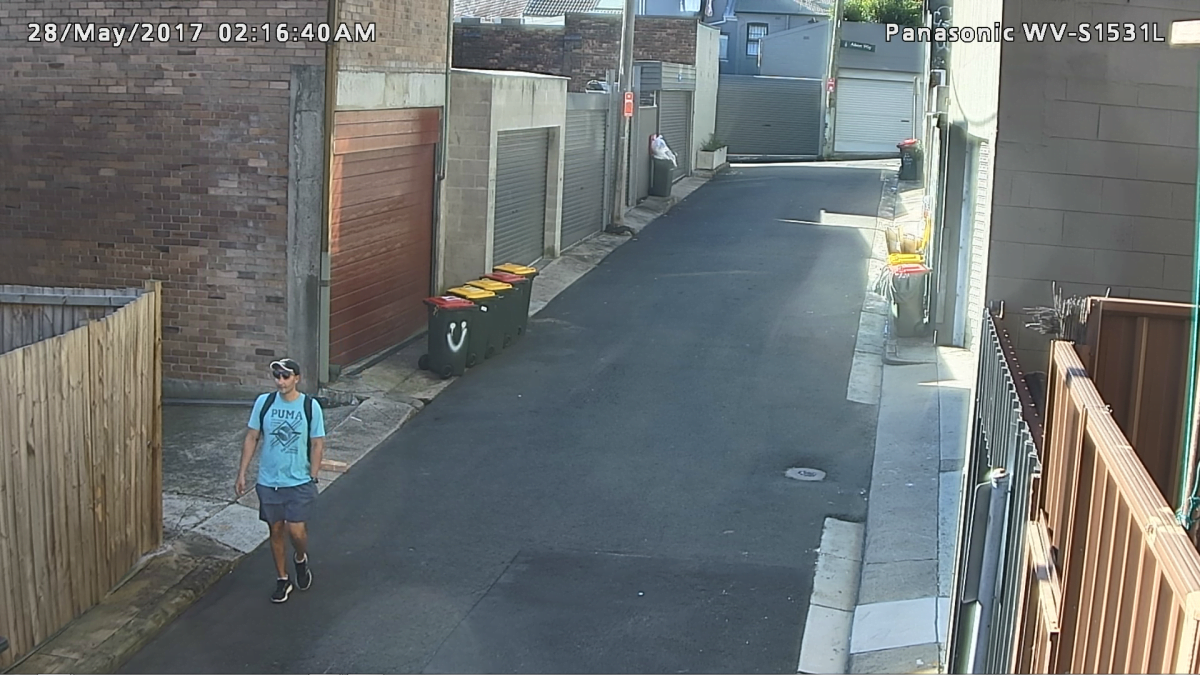
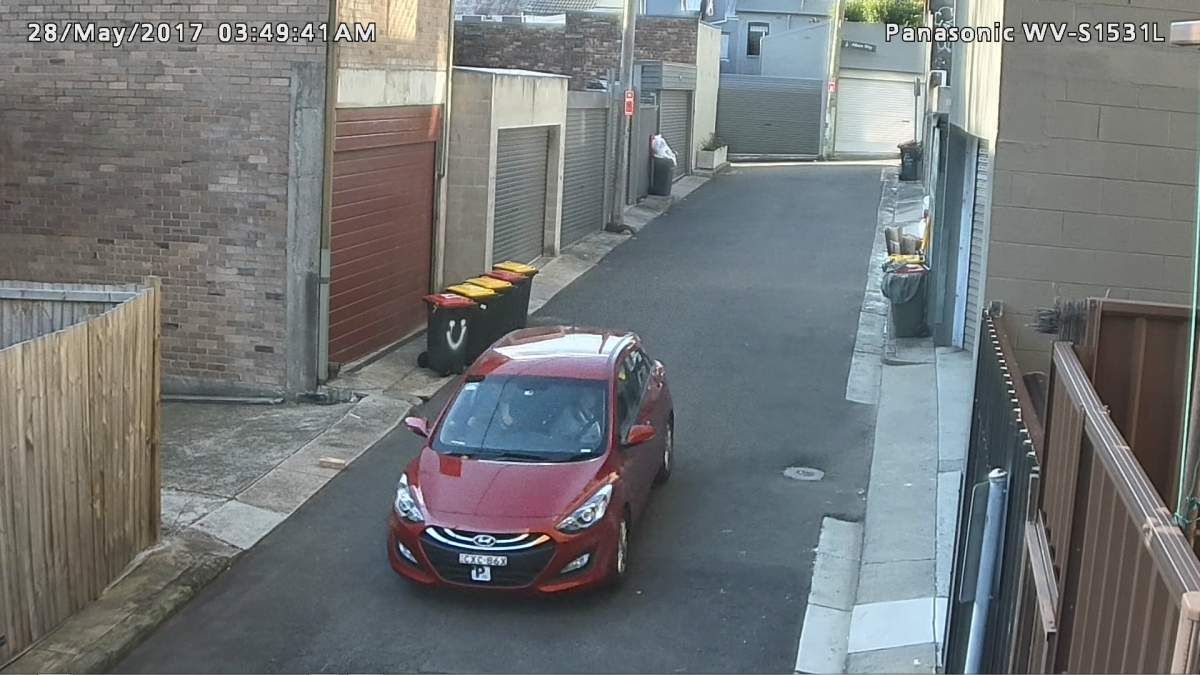
Easy plate at 20kmph…
This is a 1080p image stream so though I select my usual focal length of about 5.5mm, digital zoom has the typical limitations. Not so with motorised zoom, which is able to lean in and pick up detail in the potential angle of view – though you need to plan for full zoom during commissioning or you end up with very sharp images of a patch of road devoid of context. As the afternoon moves on I retain plates. There’s a little blooming of brake lights after 4pm, which suggests shutter speed is easing and I notice some blur and tone mapping – these are at the default noise/blur camera settings.
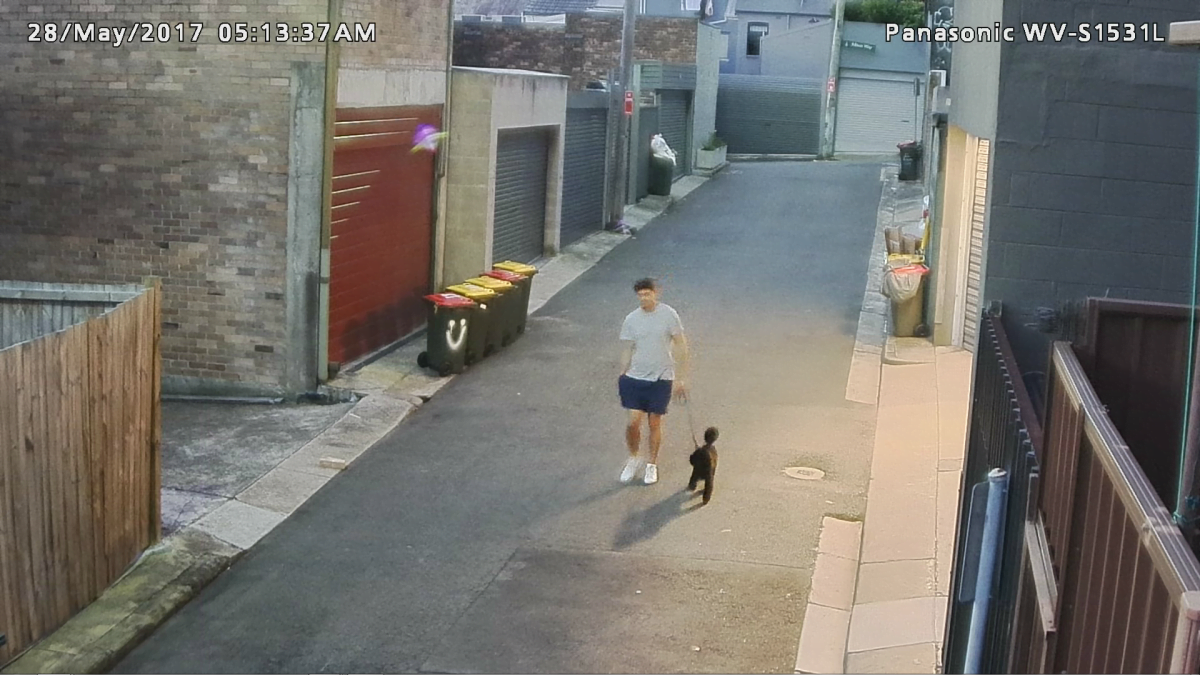
This is with the noise/blur slider centred…
It’s winter in Sydney and between 4.30 and about 5.15pm it goes from gloom to almost fully dark. During this time noise increases. I get a wee purple ghost from a streetlamp in the upper half of the image, colour rendition is surprisingly good and the camera renders the night sky much lighter than it appears to the naked eye. The colour temp is true, too, which I like. At about 6pm I push the camera into night mode with IR activated. My noise/blur settings are at default and there’s blur of a figure in the lane at around 2 lux.

Shutter speed has slowed down here.
Next day, our street scene challenges the i-Pro bullet in other ways. During the day, this camera has good depth of field, though it tends to overexpose in extreme conditions – in this case we are going from about 8000 lux into 80,000 lux. What the camera seems to do is expose for the shady side of the street – over-exposure is less impactful on situational awareness than dark holes in a scene. In these situations, there’s luminosity of scene highlights – a sort of halo effect around bright objects whether static or moving. Colour rendition remains good with no false colours and chromatic aberrations are extremely well controlled. I can’t see any at all.
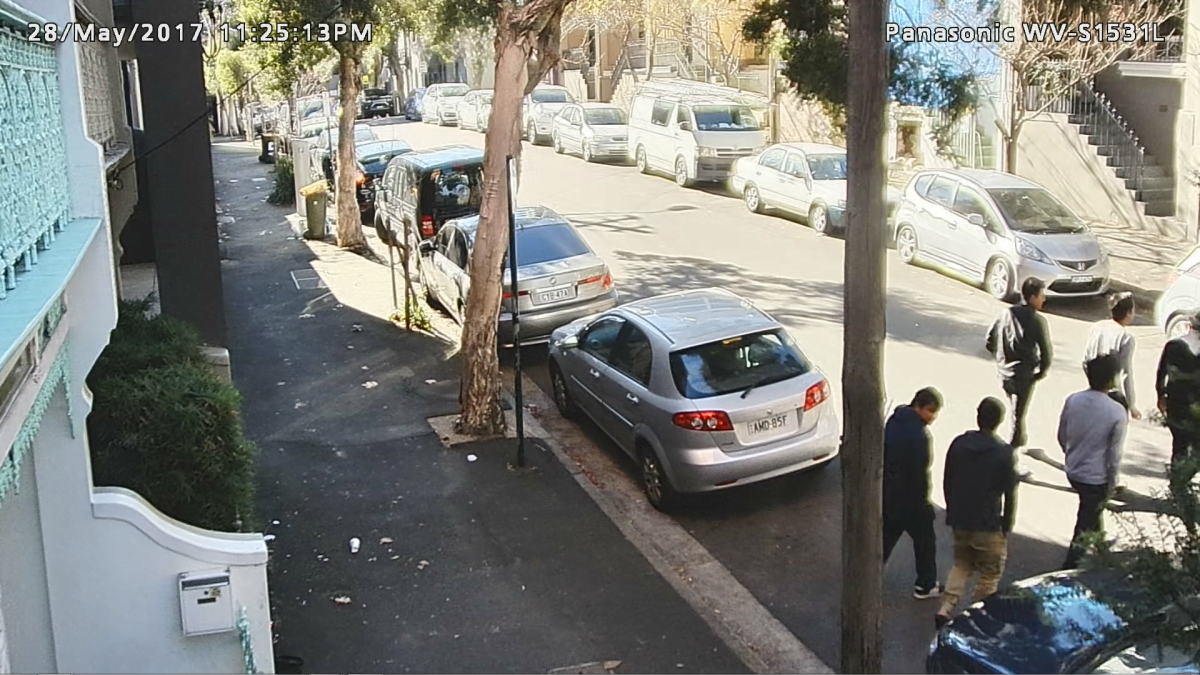
You can see the tendency to overexpose – the camera is exposing for the nearer shady side of the street.
Getting plates on the street in daylight is achievable, too, and the longer the focal length, the deeper in you can snare them. As the day goes on and the sun moves off the far side of the street, the image becomes composite, zoom and focus are good, though not as quick as the leading bullets. There’s some lens/front window flare and a little bright orange-crimson ghost caused by an internal reflection off the Mag-Fluro coating on the front element.
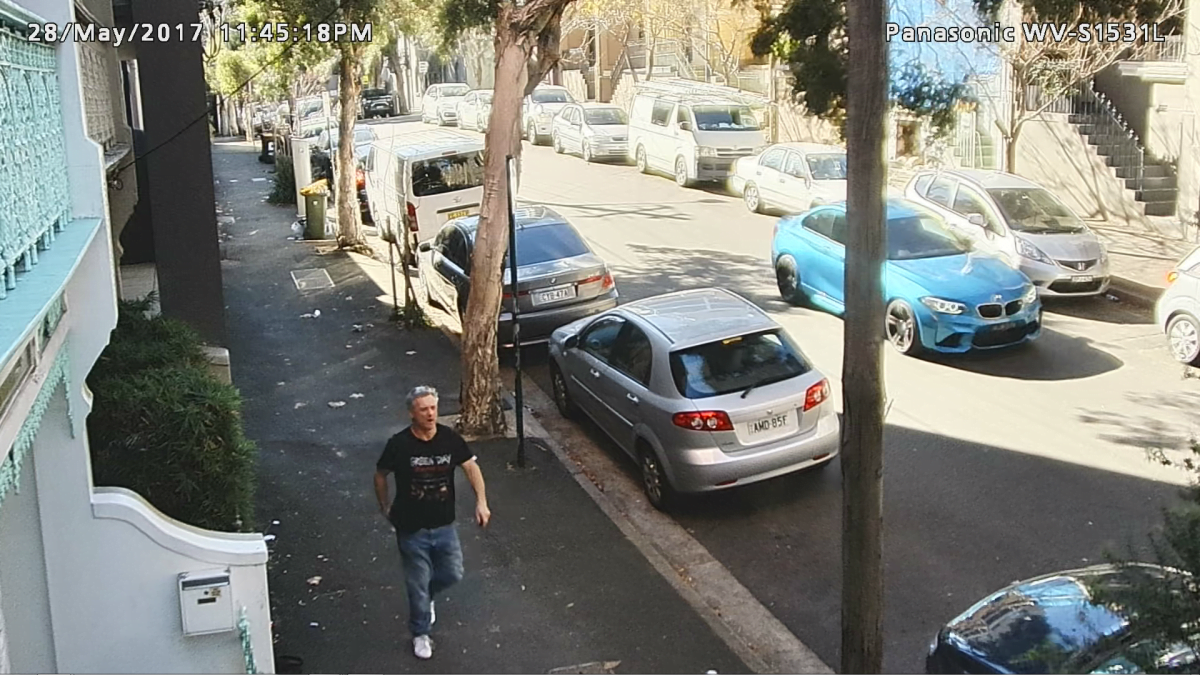
Out front with higher levels of foot traffic on the second day of our test I pay more attention to the play off between ISO and blur. During the afternoon, I spend quite a lot of time trying to find the right balance between blur and noise on the DNR slider – I choose a setting of 75.
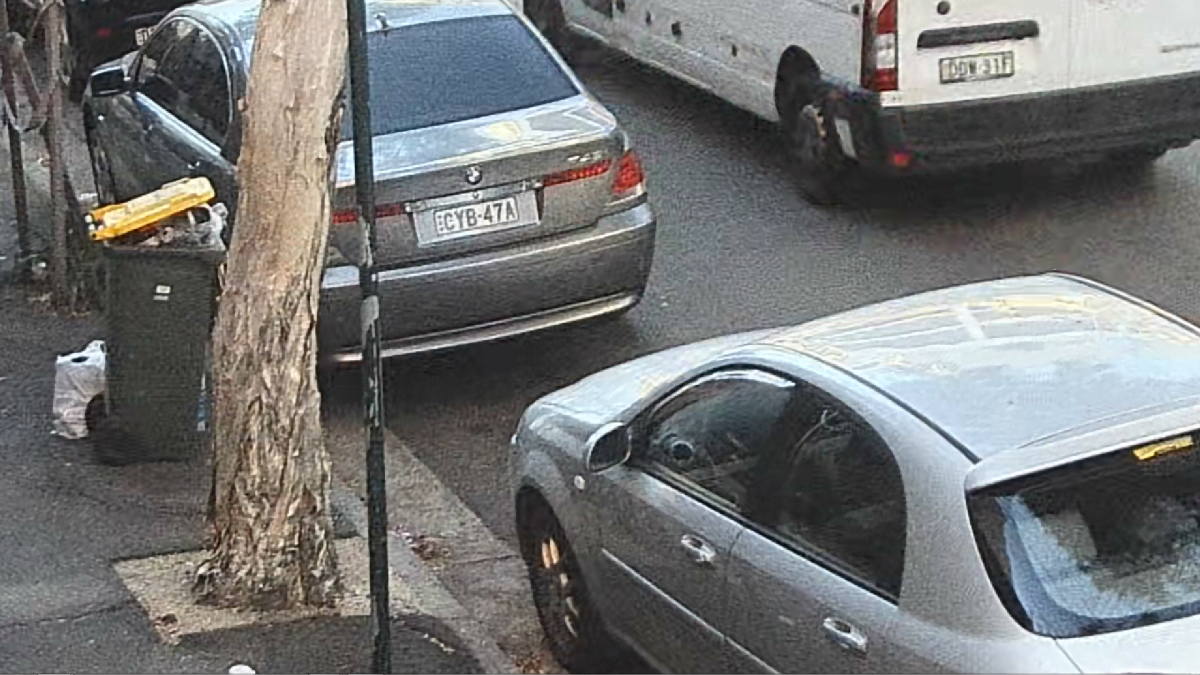
You can see the way ISO winds up in the presence of movement…well worth accepting noise for a moving plate…this is at full zoom.
This comparatively noisy image in the presence of movement when light levels fall is a bit disarming at first but as night moves in and light levels plunge it becomes clear that for surveillance applications noise is much better than blur, if compression can manage bitrate – in this case it certainly can. In fact, that’s probably a key thing to consider with smart codecs and H.265. Noise is no longer a dirty word.
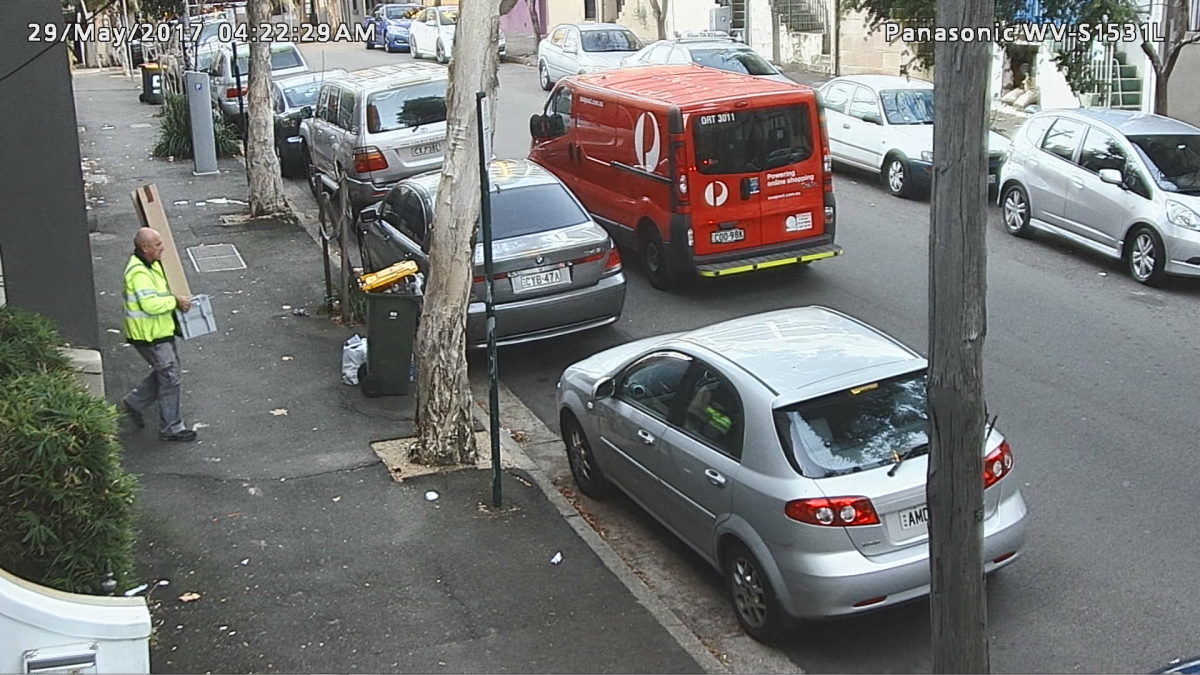
Nicely balanced image in the late afternoon.
In lower light levels – it’s about 3.15pm now – the way things appear is that when the scene is static, noise levels are very low but introduce a moving vehicle or person of a given size and heavy ISO kicks in immediately – the latency is between 1-2 seconds. The level of ISO is dependent on the position of the slider – are you happier with noise or with blur? Like most of you, I’m happier with noise, so long as there’s a face peeking out of it.
In gloomy conditions on Bellevue St, the i-Pro Extreme bullet starts to operationally outperform some illustrious competition simply through its capacity to snare a face inside 20m with the minimum of motion blur by turbo-charging ISO and controlling bitrate. There’s a point things do get murky, however. As light sinks below 10 lux, blur appears and plates are lost but faces cling to admissibility in colour down under 7 lux.
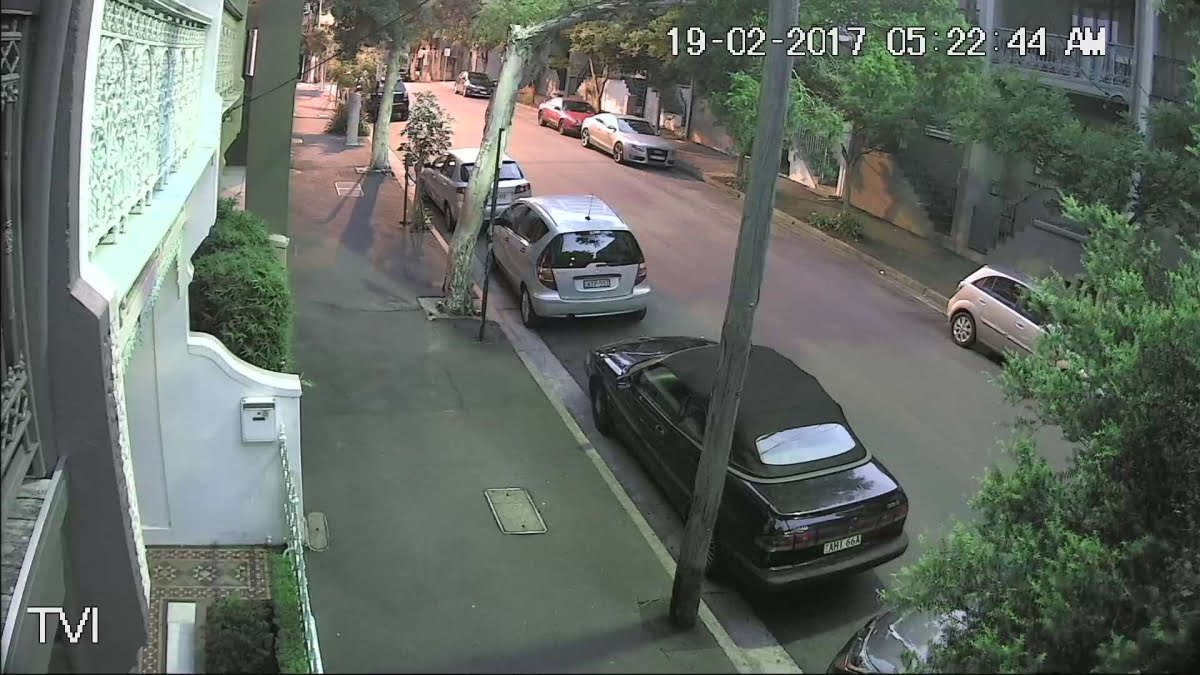
Noise but strong detail alongside it.
Thanks to that ISO capability, this camera also gets plates when others can’t – even out to about 20 metres, which surprised me. After 5pm in colour mode, I lose plates at 30-40kmph but faces remain for another 30 minutes until it’s full dark and then the combination of noise and blur erodes them. This said, it’s still possible to get court admissible faces at certain angles to available light, as well as considerable detail of clothing. I switch to night mode first with IR on and then off to get plates – I can get static plates but not moving plates. Blooming is reasonably controlled, too. But faces are still hard to guarantee.
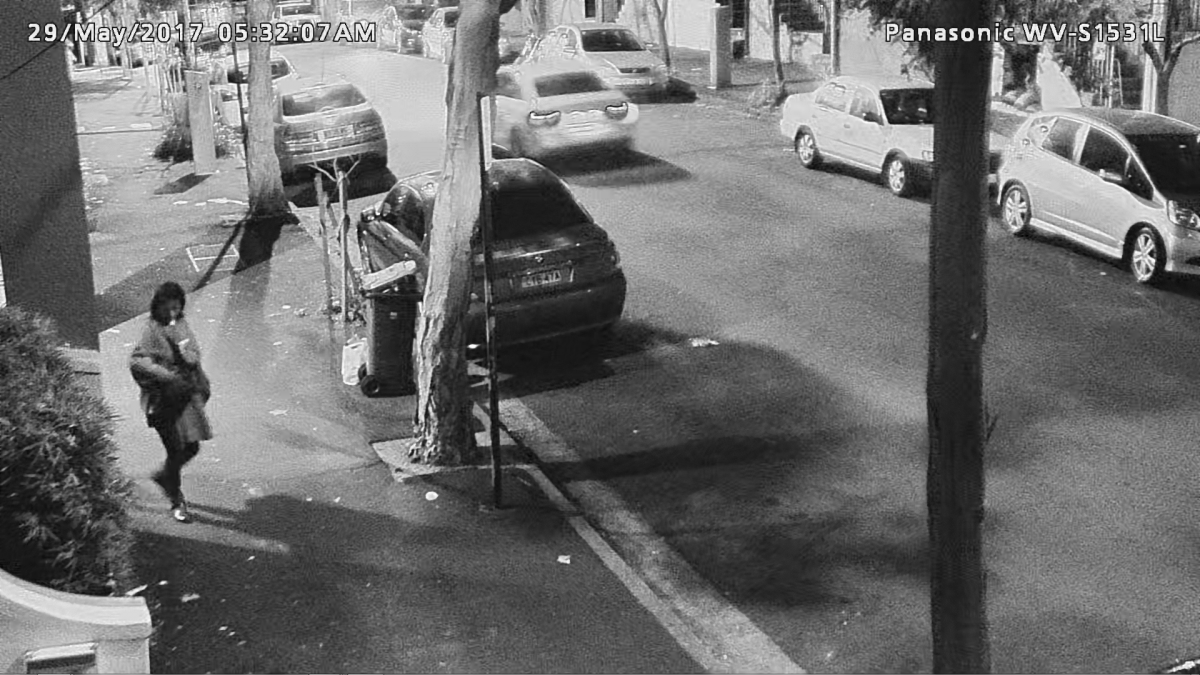
The Panasonic i-Pro Extreme bullet is a good camera. It’s designed to offer the maximum performance in the most rugged package at the most competitive price and it balances those conflicting requirements well. ♦
By John Adams
Features of the Panasonic i-Pro Extreme Bullet include:
* 1080p, H.265, 45m IR
* Auto-VIQS, Smart Face Coding
* Rain Wash Coating
* Intelligent Auto (iA)
* 2.8-10mm (3.6x) F1.6 Motorised Lens with autofocus
* Vandal resistant to IEC62262 and IK10
* Water and dust resistant to IP66 and NEMA 4X f
* Super Dynamic WDR of 144dB.








